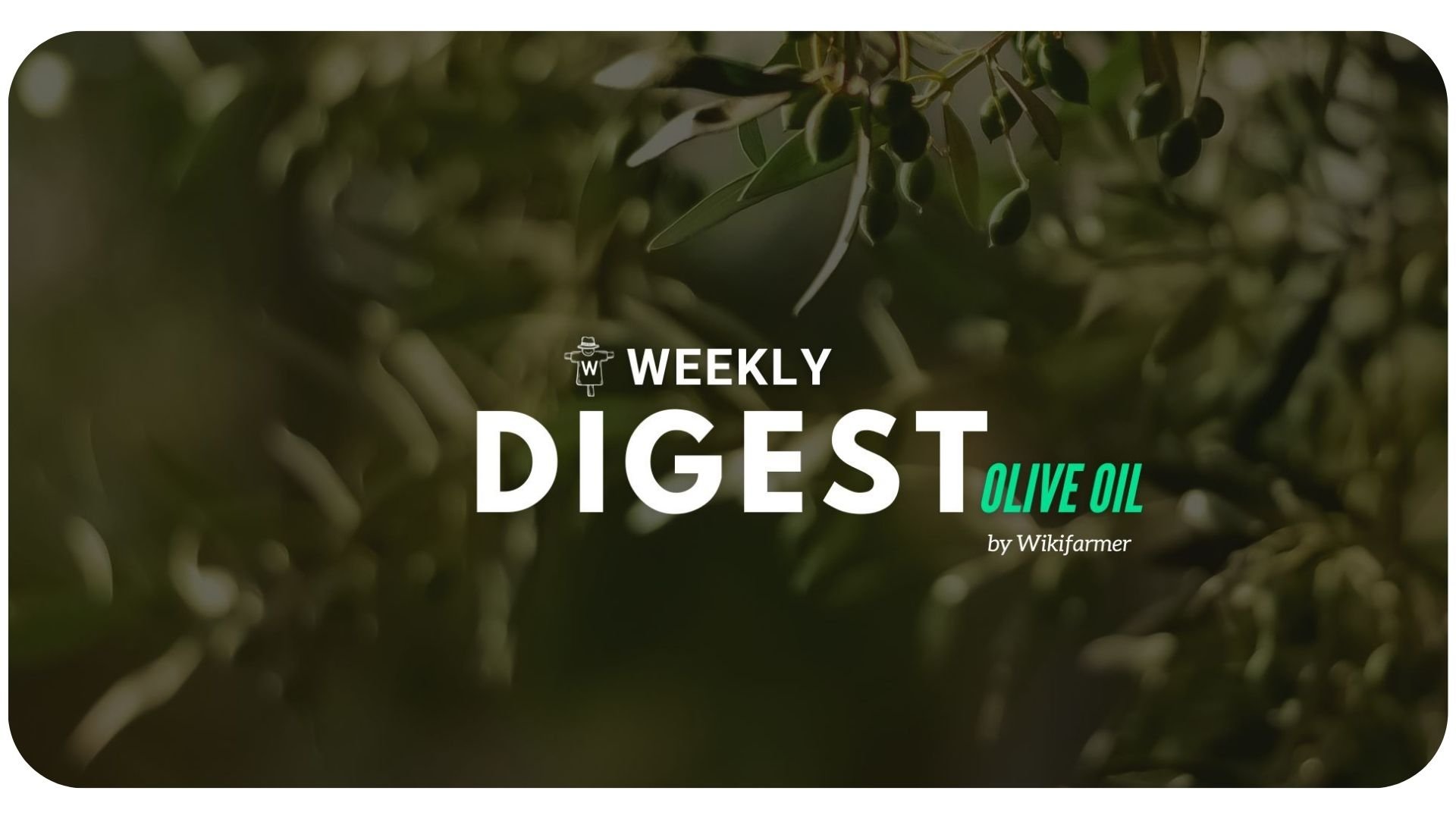Olive Oil Market Digest w21

Weekly Olive Oil Market Updates
Monthly Movements in Spain
Following last week's AICA publication on olive oil market movements, prices continue to trend upward. This week, our field experts have provided valuable insights into Mediterranean market dynamics, supported by data from organizations such as the Union of Olive Oil-Producing Municipalities of Crete, PoolRed, and Ismea Mercati. Additionally, transactions on the Wikifarmer Marketplace offer valuable information to enhance our understanding.
-png.png?width=757&height=470&name=0ZhfO-average-of-oil-mill-prices-evoo%20(8)-png.png)
Last week's Focus on Oils highlighted a notable and ongoing increase in olive oil consumption in the Spanish market over recent weeks. This surge in demand is boosting the consumption of Extra Virgin Olive Oil (EVOO), causing prices to rise. To manage the limited remaining stock of high-quality EVOO, producers and packers need to strategically plan their upcoming transactions. Prices are expected to continue climbing due to limited market availability and higher consumption volumes outpacing supply. Although virgin olive oil and lampante are not under as much pressure, their prices still follow the trend set by EVOO.
On a positive note, the Ministry of Agriculture, Fisheries, and Food (MAPA) has reported that the next crop is expected to be much better than the previous one, which should lead to lower prices next year. Additionally, the Spanish government is progressing with changes to the Common Agricultural Policy (CAP) that affect the olive oil market. This initiative includes proposals for voluntary geotagged photos and easing promotional measures and annual performance reports. These subjects were discussed with Autonomous Community representatives ahead of the Agriculture and Fisheries Council meeting in Brussels on May 27. The Council will also review a roadmap to simplify and enhance CAP's flexibility, with a revised royal decree on conditionality expected by mid-June. Furthermore, the Council will discuss reforms to the 2019 Unfair Commercial Practices Directive, with Spain advocating for harmonized EU regulations, highlighting its 2021 law as a model. These CAP changes are significant for sectors like olive oil, which rely heavily on CAP subsidies and regulations to maintain competitiveness and stability in the market.
-png.png?width=746&height=463&name=PdLod-average-of-oil-mill-prices-virgin%20(7)-png.png)
-png.png?width=752&height=467&name=9VVjm-average-of-oil-mill-prices-lampante%20(9)-png.png)
Greece is following Spain's trend, with prices rising week by week. The prolonged drought in the Mediterranean basin has impacted all major olive oil-producing countries, including Greece. With limited but high-quality stock, producers are looking to capitalize on higher prices driven by strong demand and limited availability. Italy is also experiencing similar trends, but with even more severe restrictions on olive oil supply.
Monthly report on the Italian olive oil market
According to the report published by the Italian Ministry of Agriculture, Food Sovereignty, and Forests as of April 30, 2024, Italy held 223,409 tonnes of olive oil, reflecting an 8% reduction from the previous month and a 23.8% decrease compared to the same period last year. Of this, 73% was Extra Virgin Olive Oil (EVOO), with 68.5% being of Italian origin. The remaining stocks included various types such as virgin olive oil, lampante olive oil, refined olive oil, and olive pomace oil. EVOO oil stocks specifically were composed of 50% Italian, 16.1% EU, and smaller percentages of non-EU and blended oils.
The majority of Italy's olive oil stocks are concentrated in the southern regions, particularly in Puglia and Calabria, which together account for nearly half of the total national stock. Puglia alone holds 39.7% of the stock, with Bari province being the single largest holder at 22.7%. In contrast, central and northern regions, along with the islands, hold smaller shares of the national stock.

Geographical Indications (GIs) play a significant role in Italy's olive oil industry. There are 50 registered GIs, with the top four denominations (DOP Terra di Bari, Val di Mazara, IGP Sicilia, and Toscano) representing the majority of GI stocks. DOP/IGP oils make up 7.2% of the total olive oil stock in Italy, with a notable 9.9% of all EVO oil being DOP/IGP certified.
Overall, the report highlights a comprehensive overview of the olive oil held in Italy, emphasizing the significant regional disparities in stock distribution and the prominence of Geographical Indications. Despite the overall decline in stocks, the data underscores the importance of Italian-origin EVOO and the regional concentration of production and storage within the country. Through Wikifarmer Academy, we emphasize the importance for interested parties in the sector to learn how to produce and promote their products effectively, while also offering guidance on obtaining PDO and PGI olive oil certification.
.jpg?upscale=true&width=500&upscale=true&name=Untitled%20(300%20x%20300%20px).jpg)
Wikifarmer negotiates with several suppliers to secure a steady supply of Olive oil at reasonable prices. Our team can help you with price negotiation, pay with credit terms, and arrange logistics and transportation. We also implement strict Quality Assurance procedures, making sure that producers provide us with all certificates that prove their claims about their products, and that all relevant analyses take place.
Our contribution is not constrained just to the facilitation of value optimization for the various market players. We also invest a lot in making sure that our highly-valued partners, either from the supply or from the demand side, keep up with the latest developments in their fields.
This is why we have created Wikifarmer Academy, in order to offer affordable educational courses to all. The Wikifarmer Academy is an online school that aims to provide complete educational courses that will empower you and help you cultivate more efficiently and sustainably. In case you are interested in learning more, check our new course "Wikifarmer Expert in Sustainable Olive Oil Production, Quality, and Economics" here.
.png?width=450&height=87&name=New%20Logo%20(1).png)
